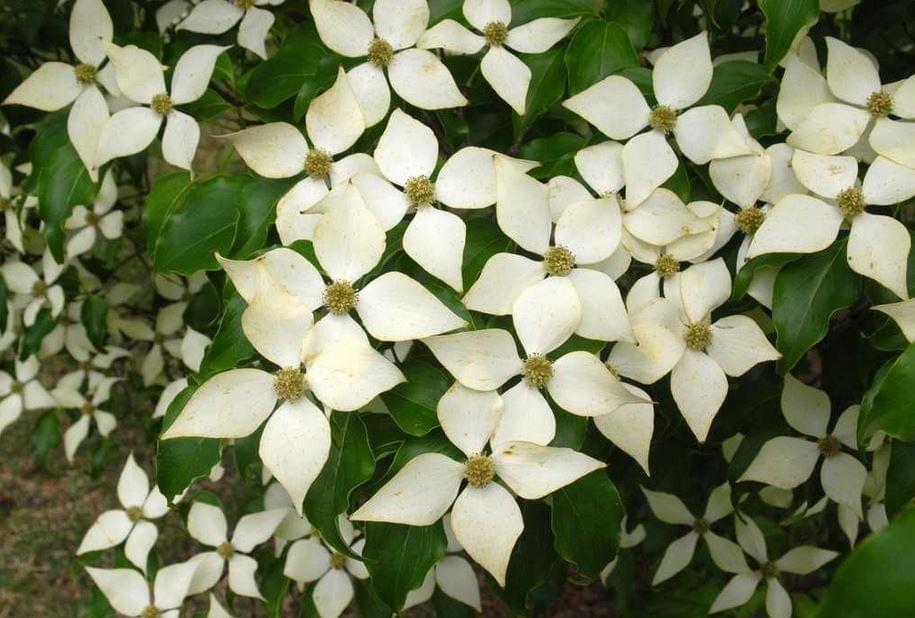
The dogwoods blooming over the past couple of weeks have really given us a showy display to welcome in spring. Majority of the dogwoods we see flowering are the common flowering dogwoods (Cornus florida). Not only is the flowering dogwood our state flower in North Carolina but it is also native to Eastern United States.
However, if you are looking for something different for your yard there is another kind of dogwood you could consider called the kousa dogwood (Cornus kousa). The kousa dogwood originated in Japan, Korea and China. It grows best in hardiness zones 5 to 8 (Wayne County is in a zone 8). It will grow about the same size as a flowering dogwood of 15 to 30 feet tall and wide but they are slow growing, only growing about 10 feet in 15 years. Young kousa dogwoods grow in a more upright shape but with age the branches will spread more horizontally. All dogwoods are considered small trees and work well as an understory tree or as a focal point in the garden.
When planting, site selection is important. Like other dogwoods, the ideal soil for kousa dogwoods is moist, fertile, loamy and well drained. However, a positive feature of the kousa dogwood is that it is more adapted to soil conditions than flowering dogwoods. The kousa dogwood does not tolerate drought and should be deeply watered during hot, dry spells. Mulching around the base can control weeds and also help conserve soil moisture. It prefers shade in the afternoons and is best not planted in full sun but can be more sun tolerant than the flower dogwood. Space should be given when planting for good root expansion.

The kousa dogwood has similar “flowers” or bracts (modified leaves) to the flower dogwood in that they are a creamy white. However, a difference is that the flowers will appear after the leaves emerge in the spring usually several weeks after the flowering dogwood. In the fall, the kousa dogwood has fall leaf color that varies from purple to red to yellow. The fruit on the kousa dogwood is different than the flowering dogwood in that it is larger and pinkish-red to red (looking similar to a raspberry) and is very showy from September to October. The larger fruit could become a litter problem in high traffic areas so you would want to avoid planting near sidewalks and driveways where one may walk.
Kousa dogwoods appear to be more resistant to typical pest problems that plague the flowering dogwood. They seem to have fewer problems with dogwood anthracnose, powdery mildew and some dogwood borers.
If you enjoy dogwoods, the kousa dogwood may be one to consider to offer something different in your landscape giving those similar dogwood blooms after the flowering dogwoods begin to fade.
Jessica Strickland is an Agriculture Extension Agent, specializing in horticulture for North Carolina Cooperative Extension in Wayne County.


